"Half a wing is indeed not as good as a whole wing, but it is certainly better than no wing at all. Half a wing could save your life by easing your fall from a tree of a certain height. And 51 per cent of a wing could save you if you fall from a slightly taller tree. Whatever fraction of a wing you have, there is a fall from which it will save your life where a slightly smaller winglet would not. The thought experiment of trees of different height, from which one might fall, is just one way to see, in theory, that there must be a smooth gradient of advantage all the way from 1 per cent of a wing to 100 per cent."If Richard Dawkins had 1% of a wing, he'd be really happy to have such a magnificent evolutionary advantage. He could fall from 1cm higher than you without dying. His offspring would fill the earth, and we would all die out. Natural selection would somehow make sure of that. 1,000 generations later, somebody would evolve 2% of a wing, and the one-percenters would die out because there's no way they could compete with 2% of a wing. This has to happen very slowly and gradually but never leave any incriminating evidence in the fossil record. It's evolution, baby!
To be honest, I'm not entirely sure what 1% of a wing would look like. Would it even be visible? I envision myself standing on top of a mountain with two little bumps on my back (or just one??) and looking down at the puny humans dying left and right as natural selection rolls through them like an Israeli bulldozer through Palestinian houses, showing them no mercy. Take that, wingless suckers!
But it's a bit difficult to imagine how exactly this could work. On one hand, the process has to be slow and gradual; on the other hand, the intermediate stages seem to disappear quickly and perfectly enough to not leave a trace. Do unevolved forms stay or disappear? Monkeys are here. Half a wing is not. How does natural selection decide? It seems like it evolves new forms very slowly while killing off the intermediate forms very quickly and completely, which is strange, because evolving the new forms and killing off the old ones should be one and the same process.
But what's really disturbing about Dawkins's explanation is that he thinks that you, the reader, have half a brain (at best). He acts like wings evolved from nothing, even though he should damn well know, unless he's even dumber than I think (which would be rather difficult), that wings evolved from arms. On dinosaurs. Or at least that's the idea of these silly people who believe in evolution by natural selection. Why is this important? Well, half a wing may be better than no wing at all (though if you ask my opinion, until you can fly, it's mostly just dead weight), but if the wing evolved from an arm, then half a wing also means half an arm, and the dinosaur started with a whole damn arm. How is something that's half a wing and half an arm better than a whole arm? I have no idea, but I'm pretty sure I'd rather have a whole arm. With this half-assed (or half-winged?) thing, I feel like not only I would I not be able to fly yet, but I probably couldn't do a lot of things that I could before, when I had two good arms.
Somebody call Dawkins and ask him about it. You'll probably learn something new that makes no sense, so it could be fun. It's been said about him that he knows more things that aren't true than perhaps anyone alive. I think this is a very acute observation! He really seems to have an endless supply of elaborate explanations that are wrong. (One might call it sophisticated bullshit.) For example, he said this in one of his ridiculous books:
"Fascinatingly, it is very obvious in human embryos, whose 'pharyngeal arches' are clearly derived from ancestral gills [clearly!], as one can tell by looking at their detailed anatomy. Of course they don't function as gills [because they're not], but five-week human embryos can be regarded as little pink fishes, with gills. [So they don't function as gills, but you can regard them as gills, because...???] I can't help wondering, once again, why whales and dolphins, dugongs and manatees have not re-evolved functional gills. The fact [or rather, delusion] that, like all mammals, they have, in the pharyngeal arches, the embryonic scaffolding to grow gills suggests that it should not be too difficult to do so. The Greatest Show on Earth, 2009. [Comments mine.]Oh my. So many things you can believe here, if you're dumb. How does Dawkins know these things are derived from gills? Well, just by looking, duh! There are four or five vertical lines, and that's what gills look like, so that's clear evidence. If you know some other things that have four or five vertical lines, you know what they evolved from! And you also know that when you were a five weeks old embryo, you were really a little fish. And look at you now, you can read and stuff.
So why don't whales re-evolve gills? It should be so easy. Dawkins could probably do it, if he really wanted to. But then, whales are probably not as smart as he is. Or maybe... it's because there are no gills in mammal embryos, no creature has ever 'evolved' a new organ, and Dawkins is talking rubbish as usual. (Also, mutations are random, so expecting a specific set of mutations to show up when needed makes no sense.) Let's ask William Fix:
See? Between 1984 and 2009, humans evolved retarded ideas almost to perfection! (Most of the credit goes to Dawkins.) Just imagine where we'll be in a million years! We'll know so many things that are wrong that... I don't even know how to finish this sentence.
"It has been known for almost a century that at no stage of its development does the human embryo have gill slits. There are simple folds in the tissue in the region which later becomes the neck, but to refer to these as gill slits is about as accurate as referring to hands as antennae." The Bone Peddlers, 1984. [Emphasis mine.]
One more question about the wings, though. If this dinosaur that's evolving wings can't fly yet due to insufficient wing percentage, why the hell is it climbing trees? Chickens kinda suck at flying, but they're usually smart enough not to climb tall trees (despite generally being pretty dumb). They actually have 100% wings, but I'm not sure those are very useful. What survival advantage are the wings giving chickens over, say, cats? Can chickens really fall from higher up than cats and survive? Can they get that high in the first place? I would bet my money on the cat, even though it has 0% wings. (Unless it's already evolving and has 1% and nobody has noticed yet. "Doctor, my cat has this little bump on its back. What could it be?" "Oh, don't worry about it. It's probably just evolving wings.")
If Dawkins' explanation were to really make sense, falling from trees would have to be a major activity of these dinosaurs, as natural selection would require many of them to die as a consequence of it, so that those with 1% more wings could survive and drive evolution forward. It's difficult to imagine that any animal would be so stupid that it would regularly climb trees, fall from them, and die. Animals tend to either be very good at climbing, or they don't do it at all. And I'm pretty sure suicidal activities and stupid competitions were only invented by humans.
I'm a bit perplexed about these percentages, to tell you the truth. For example, how is 46% of an egg better than 45% of an egg? And is there 46% of a bird inside? How does it work? How do you get 1% of an egg, and what does it do?! It seems to me like an egg is pretty damn useless unless complete, but maybe I just lack Richard's imagination. I think he may have evolved a better understanding of evolution. (Meaning he's better at making things up.)
This is even stranger given that the changes have to be so small and numerous that there would usually be a lot more than 100 of them, so 1% change is actually big. The evolutionary battle is thus between elephants with 76.8% of a trunk and elephants with 76.9% of a trunk. Somehow natural selection with an IQ of zero can tell them apart and make sure the ones with 76.8% cannot reproduce, which is, frankly, quite fascinating, especially given that elephants with 0% of a trunk must have survived long enough to produce elephants with 0.1%. I can see why Dawkins calls it the 'magic of reality'. I mean, reality may be in short supply in the things he says, but there certainly is plenty of magic.
The big question here is, what does half a wing look like? Is it like a whole wing, but half the size? No, that would make no sense. It would genetically be a whole wing, just small. We're talking about cumulative mutations, so in evolutionary terms, half a wing should have half the mutations needed for a whole wing. But what would a wing with half the genetic code be like? What would it be missing and how would it be useful? These are all questions that should be answered before we can just naively claim that half a wing is better than nothing. If gaining half a wing means losing half an arm, this half a wing had better be worth the price.
Let's think about how this would actually work. What do we need for a wing? Some bones (which should come from the arms, so those just need various modifications), some muscles, lots of feathers, the right shape and position, and so on. It's hard to imagine how this could form from arms one step at a time. But there are a few big steps that would seem necessary, so for the sake of argument, let's go with roughly this:
- Feathers must grow on the arms.
- The shoulder joints have to be modified for different movements, and many muscles need to change significantly.
- The shape of the arms has to change into the shape of wings. (Sloooooooowly.)
- The fingers, along with their original functionality, have to disappear.
I think the last one has to be last because, until you can fly, the fingers are the most useful part. But what about the order of the other three? If the shoulders start changing shape for flight, what survival advantage is there at this point? The arms would just become awkward to use. And if the shape and proportions of the arms start changing first, things get weird too. I suppose feathers can grow first. So you can have an arm with feathers that can't fly. You have to start with a few small feathers. Looks like some of the dinosaurs actually had this, if we can believe the drawings in books (although, as Jonathan Wells has shown, we can't, but whatever.) But how did they get feathers on arms? Was it really driven by natural selection? The other dinosaurs were surviving just like the feathered ones until they all went extinct, so how are feathers on arms useful for survival? Hell if I know. I mean, imagine you have some feathers on your arms. Would that make your life easier and allow you to have more children? I highly doubt it.
Anyway, let's say we have arms with feathers. Then what? Either the shoulder complex has to morph, or arms have to change shape into wings. But both of those options would seem to make the arms worse while getting us nowhere near functional wings. The arms had the ideal shape for functioning as arms. If they can't be used as wings yet, any change from arms towards wings would just make them worse arms. And even if we somehow got through those steps, it's still fascinating that there are no birds with hands and (visible and functional) fingers on their wings. Presumably they weren't able to survive, even though they must have for millions of years before they evolved into fingerless birds. And are wings without fingers really better than wings with them? Fingers are pretty useful, in my experience. Why would birds with fingers on wings die and ones without them survive?
But everything mentioned so far is just a rough outline. There are hundreds of details to take care of. The feathers have to become much more refined and complex in order to fulfill the required function. In fact, even just the evolution of feathers is totally inexplicable by means of mutations and selection.
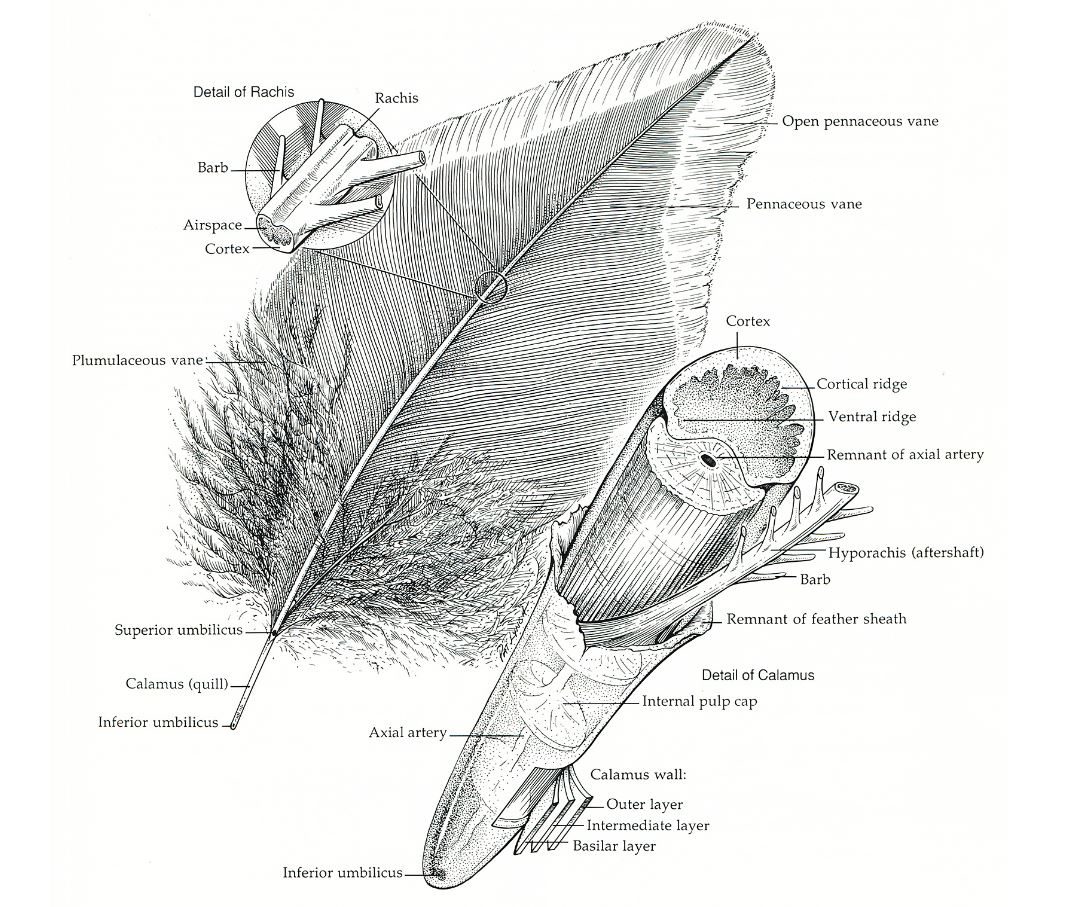
Every aspect of feather origins bristles with challenges to Darwinian scenarios. To take a minor example, without apoptosis of the cells between the barbs and barbules (as in the developing digits in the auto-pod) neither barbs or barbules could exist as separate filamentous structures. What came first, the cellular condensation, that created the barbs (which occurs first in the development of extant feathers), or the apoptosis (which occurs after the development of the barbs in extant feathers) that separated them into discrete filaments? Only if both developmental processes are in place can the adaptive end of a branched feather be actualized, which again raises the specter of evolution per saltum. Again, severe problems arise in trying to imagine a Darwinian scenario for the origin of the barbules and their subsequent differentiation into distal barbules with hooks and proximal barbules with grooves, which inter-lock together, binding the pennaceous feather into a closed vane. In attempting to reduce feather origins to Darwinian scenarios, we are led not only into "endless absurdity," but into direct conflict with what is known of the developmental processes underlying the ontogeny of the feather. There is no sanction in the developmental processes underlying feather ontogeny for one-by-one, bit-by-bit Darwinian functionalist approaches.So we don't even know what feathers evolved from, much less how. We have no clue what 1% of a feather would be and how it could be useful. The complexity of a feather is staggering once you look at the details. But this is the thing about evolution - it only seems plausible if you know almost nothing about biological structures. Once you look at the actual complexity of something like a feather (or really just about anything) and are tasked with figuring out how this could have come about accidentally, step by step over millions of years, and how each of the steps would result in producing more offspring, you have to be Richard Dawkins to still believe it's possible and makes any sense. Then you just say that 25% of a feather is better than 24% of a feather, and it doesn't bother you at all that nobody has any idea what 24% of a feather would be like, how it would evolve on the genetic level, and how it would increase birth rate. You have to live in your own world and not be bothered by reality.
[...]
The origin of the various feather novelties and the developmental processes that actualize them are enigmatic in classic Darwinian terms. Prum and Brush conclude:By emphasizing the reconstruction of a series of functionally and microevolutionarily plausible intermediate transitional states, neo-Darwinian approaches to the origin of feathers have failed to appropriately recognize the novel features of feather development and morphology, and have thus failed to adequately explain their origins.Evo-devo research on the feather has finally laid to rest the Darwinian "frayed reptile scale" scenario. Feathers and scales are fundamentally different skin appendages. As Thor Hanson comments: "What Prum recognized now seems obvious: there is a fundamental structural difference between scales and feathers and how they grow." Although it is clear that the feather was actualized in stages, which can be followed in the fossil record, there are no known adaptive sequences leading gradually to each of the novelties or new homologs. Evolution: Still a Theory in Crisis, 2016.[Emphasis mine]
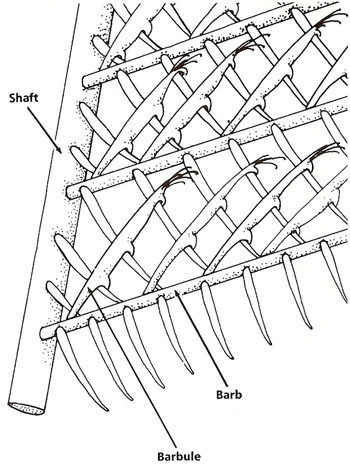
Is 2% of a knife really better than no knife at all? (What the hell is 2% of a knife? A tiny piece of metal?) Is 2% of a box really better than no box at all? (What the hell is 2% of a box? A small piece of paper?) Is 2% of a car really better than no car at all? (What the hell is 2% of a car? The windshield?) Dawkins seems to operate under the illusion that 2% of a knife cuts 2% as good as a whole knife, and that 2% of a car goes 2% as fast as a whole car, but of course in reality, if you only have 2% of a car or a knife, you ain't goin' nowhere, and you ain't cuttin' nothin'. 2% of something isn't even recognisable as having anything to do with that something. These ideas can only come from the head of someone who hasn't really thought seriously about the topic. Just think about the usefulness of 1% of a light bulb, 1% of scissors, or 1% of a Rubik's cube. Just like these things, 1% of a wing is not only useless and serves no purpose - it's not even recognisable as the object it is supposedly a part of, and it certainly won't make you produce more offspring, which is the only thing that could make evolution by natural selection work.
By the way, while the dinosaur was evolving wings by falling from trees, it also simultaneously evolved a beak and kinda became a bird with no evidence of half a bird and half a dinosaur with half a wing and half a beak ever having been seen anywhere. (I hope that at this point everyone knows that the infamous Archaeopteryx was not an ancestor of birds. Also it had whole wings and no beak.) So I don't know. This evolution thing always gets a lot more difficult once you try mixing it with common sense, never mind biology. Somebody tell me how to evolve a wing step by step in the comments. I have no idea. Bonus points for evolving a beak at the same time.
Dawkins seems to think it's really easy to gradually evolve wings, but he never quite explains how. For him, wings just evolve one percent at a time, and with each percent you can fall from a taller tree. How it fools anybody above the age of 5 is beyond me. Also notice that he insists on a continuous gradient where each extra percent is better than the previous state, which in the long run implies that if evolution is true, whole wings are way better than arms. If they weren't, they could never have evolved from them. Why did birds evolve 100% of wings and all other armed creatures (that's creatures with arms, not guns) not even 5%? Guess we'll never know.
But the mysteries don't end there. If even 1% of something is better than nothing, then how did snakes evolve from lizards? Because supposedly those went from 100% of legs to 0% and thus became better. This seems to be kind of backwards. It's like lizards didn't understand percentages and accidentally evolved in the wrong direction. Think about the role of natural selection that first evolves legs because they're much better than no legs, and then evolves no legs because that's much better than legs. What part of a leg do you lose first to become an evolutionary improvement over someone with whole legs? Are 3 legs better than 4? Beats me. Call Richard. I'm sure he'll make up something incredible. Literally.
It's also interesting that all lizard-snakes with half a leg went extinct, even though they had to be better than the original lizards that still survive. I mean think about that. Things supposedly evolve from not very good, to half good, to good. But around us and in the fossil record we see the good and the bad (and the ugly!) but never the half good. How does that make sense? Why does the bad survive and the half good disappear without a trace? If everything is supposed to be a gradual continuum, why do we see the 'before' and the 'after' but not the 'in between', even though it should be the largest part?
Think about the evolution of eyes. It can only work because having a larger fraction of an eye is better than having a smaller fraction. Like, if it wasn't such a bid deal, then natural selection wouldn't promote it, right? So if it's so clear that eyes are better than no eyes, why, after 3 billion years of evolution, are there still animals without eyes? Evolutionists claim that eyes have evolved over 40 times independently (no, seriously - don't laugh), so it can't be too hard. Having eyes is great for survival, which means having no eyes is bad for survival, which should translate to eyeless things not surviving. But they do. What the hell? It's like they don't care about evolution at all. They seem to be blind to the evolutionary requirement that they die out!

Imagine a cat that, due to a mutation, has 1% wings. First of all, as I've explained, nobody would even notice, including the cat. But according to Dawkins, this cat can survive better and reproduce more than ordinary cats because "there must be a smooth gradient of advantage all the way from 1 per cent of a wing to 100 per cent". I'm sure at this point everyone can see that this is pure idiocy. Even if the cat got 50% of wings in one step, how would that be useful? Again, first you have to think about what it does to the cat's front legs, from which the wings are 'evolving'. This cat would most likely have huge trouble surviving, if anything. But let's be super generous and allow the cat to have four whole legs and half of wings on top of that. It should be 'a half' genetically, not in size, but that wouldn't really work to ease a fall from a tree, so let's allow that it can ease such a fall. (We have now created a 1000 times better theoretical advantage than mutations could ever produce in one step.) So now the cat can fall from a tall tree and survive. How often do cats fall from tall trees and die? Is it often enough for the offspring of the cat with half a wing to survive at a higher rate and slowly replace the normal cats? Does that seem plausible to anyone who actually knows anything about cats? What about the cat's other activities? Cats are good at crawling through small spaces. Wings would be in the way. They would also slow the cat down when running. Running is pretty important for catching something to eat. And let's not forget about the massive energy cost in producing these wings with all the feathers and some decent muscles. So the wings would be useful when falling from tall trees (cats can handle falling from smaller ones just fine) and a hindrance in most other activities. And that's when we've allowed genetically fully formed small-size wings to magically appear out of nowhere, with no damage to legs. Realistically we'd have wings forming from front legs, starting with 0.1%, which nobody could even detect. What good is that doing to the cat? I asked one. Cat said, "Fak ju, stupid yumans. Leaf mah paws aloan."
Anyway, let's check some other interesting things Richard says, like this: "No serious biologist doubts the fact that evolution has happened, nor that all living creatures are cousins of one another." Well, I can believe that Richard Dawkins is the cousin of a donkey, but I'm not sure about the rest. I've seen a lot of biologists who looked quite serious say that evolution doesn't work. How do we know if a biologist is 'serious'? It's probably when s/he is Richard's friend. As for me, it's not even that I doubt 'the fact that evolution has happened'. I kind of doubt that evolution is a fact at all. Actually no, that's not true. I don't doubt that. I know it's bollocks. (At least the Darwinian version.) And so do many others. But I think these people are dead to Richard. We must be unevolved or something.
Here's another strange thing. If natural selection eliminates all the failed evolutionary dead ends so well that we can't find them anywhere, then explain to me this: If humans have evolved from religion to materialism, then how come religion is still here? If materialists are more evolved than religious people (as Darwinists seem to believe), natural selection should weed out even people who are 0.01% religious, like it weeded out animals with any fraction of a wing. But last time I checked, there were Bibles everywhere (and also some Korans and other books of fairy tales). If evolution is true and there's no half a wing left for us to see, there shouldn't be half a materialist (that's like a hesitant, tentative one), and there shouldn't be religious people at all. How long do we have to wait before natural selection kills off all those unevolved religious people? They've been around forever and keep multiplying!
But if, on the other hand, all kinds of different things can survive just fine, then what the hell does natural selection even do? How can it drive evolution when all kinds of 'unevolved' things are still around us? Bacteria, the supposed beginnings of evolution, are still here and probably more numerous than just about anything else. Seems like they have survival figured out better than most other creatures. So if everything evolved from them because everything else was better than them, why didn't natural selection kill them off? It sure seems to have killed off all the intermediate stages between bacteria and multi-cellular organisms, and those must have been better at surviving than bacteria. So what gives? None of this adds up.
Another of Dawkins' pearls is this one (about dog breeding): "If so much evolutionary change can be achieved in just a few centuries or even decades, just think what might be achieved in ten or a hundred million years." Here, again, he bets on your being stupid and not noticing that dog breeding is an example of design and thus extrapolating from it what could be achieved by random mutations makes no sense.
But there's a second dishonest thing in that quote, namely the words "so much evolutionary change". There are limitations to the changes of any single characteristic of a species, and breeders are well aware of this. They know that by breeding dogs with the longest possible ears, they soon hit a ceiling of maximum length they can't overcome, and the same with any other feature. Also, pushing any feature to its extreme usually results in various problems, like short-nosed breeds of dogs having trouble breathing. And of course the dogs always stay dogs. There's a big difference between variation of existing characteristics and addition of new characteristics. Nothing new has ever been added by dog breeding. So a better commentary, one that I would make, is this: "If so little evolutionary change can be achieved by design, just think how hard it would be to achieve anything accidentally!" Let that sink in.
Sunk? OK. Let's have another bit of 'wisdom' from Richard:
It has been estimated that there are between 1 billion and 30 billion planets in our galaxy, and about 100 billion galaxies in the universe. Knocking a few noughts off for reasons of ordinary prudence, a billion billion is a conservative estimate of the number of available planets in the universe. Now, suppose the origin of life, the spontaneous arising of something equivalent to DNA, really was a quite staggeringly improbable event. Suppose it was so improbable as to occur on only one in a billion planets. A grant-giving body would laugh at any chemist who admitted that the chance of his proposed research succeeding was only one in a hundred. But here we are talking about odds of one in a billion. And yet...even with such absurdly long odds, life will still have arisen on a billion planets - of which Earth, of course, is one.This is true (and completely unsurprising if you understand numbers). If the chances were one in a billion, they'd be pretty good. The only problem is that Dawkins forgot to add a few thousand zeros to that billion, to reflect the real odds. Amazingly, though, he calls one in a billion (109) "absurdly long odds" yet sees no absurdity in evolution, with its odds of 1 in 1040000 and worse. Either he's not good with numbers, or he's bullshitting you on purpose.
This conclusion is so surprising, I'll say it again. If the odds of life originating spontaneously on a planet were a billion to one against, nevertheless that stupefyingly improbable event would still happen on a billion planets. The God Delusion, 2006
Here's another amazing insight:
In his book Seven Clues to the Origin of Life, the Scottish chemist A. G. Cairns-Smith makes an additional point, using the analogy of an arch. A free-standing arch of rough-hewn stones and no mortar can be a stable structure, but it is irreducibly complex: it collapses if any one stone is removed. How, then, was it built in the first place? [I'm guessing not by natural selection?] One way is to pile a solid heap of stones, then carefully remove stones one by one. More generally, there are many structures that are irreducible in the sense that they cannot survive the subtraction of any part, but which were built with the aid of scaffolding that was subsequently subtracted and is no longer visible. Once the structure is completed, the scaffolding can be removed safely and the structure remains standing. In evolution, too, the organ or structure you are looking at may have had scaffolding in an ancestor which has since been removed. The God Delusion, 2006. [Comment mine]What a brilliant idea! Except Dawkins is, as usual, missing at least two important points.
1. A scaffolding is a product of design in all cases we know of. (And so are those above-mentioned arches themselves.)
2. Even if we accepted the role of scaffolding (and it would have to be quite a heavy role) in evolution, it would just add additional structures to be built (and later dismantled) by chance and thus make everything even less probable. And since evolution is already less probable than anything else anyone's ever calculated the probability for, making it less probable isn't exactly helping.
A third point could also be made, and that is, again, the fact that no such scaffolding has ever been discovered, even though it should take millions of years for it to disappear.
Basically Dawkins is saying that if the argument is that things in biology are too complex to arise by chance, he can fix that by making the process of evolution even more complex. You know, if it's too hard to build a house, you can build two houses and then demolish one. High five! Problem solved. Of course this is very common in evolutionary explanations - in order to make one thing credible, you have to throw in something else that's totally ridiculous, like solving the inconsistency between evolution and the fossil record with the idea of 'punctuated equilibrium', which basically means that things have to evolve much faster than Darwin suggested, and that again lowers the overall probability. (But hey, now we can explain all the missing fossils!)

You'll have an arch. Really, try it. Dawkins says it will work.
I predict that, if a form of life is ever discovered in another part of the universe, however outlandish and weirdly alien that form of life may be in detail, it will be found to resemble life on Earth in one key respect: it will have evolved by some kind of Darwinian natural selection.Wow, let me digest this nonsense. Om nom nom. OK. I have a prediction too. I predict that when Dawkins dies, beholds reality, and realises what kind of dumb shit he'd been spouting all his life, he'll die a second time from embarrassment. Hopefully one day, in the distant 'future', we can compare notes on whose prediction was more accurate.
The Blind Watchmaker, 1996
Here's yet another thing he's wrong about: "The Darwinian theory is in principle capable of explaining life. No other theory that has ever been suggested is in principle capable of explaining life." Well I beg to differ. The theory of Intelligent Design is capable of explaining life, or at least organic life, but that's the only life Dawkins knows about anyway. He thinks his own consciousness is an illusion. (Basically he's delusional even according to himself.) So he's wrong in the second part of the quote.
He's also wrong in the first part. Darwinian theory cannot explain life at all. The only 'evidence' for Darwinian theory's ability to explain life is Richard's claim that it can explain life. When he was asked how the first living cell appeared, he said, "Happy chemical accident." That's his explanation. Honestly, even "It fell from the sky" would have made more sense. If we were to judge theories by their explanatory power, "happy chemical accident" would be near the bottom, along with "magic!" and "God blew his nose". So I think this theory needs about two billion years of evolution to start making some sense. As a starting point, I would humbly suggest getting rid of the word 'accident' and then the other two words. Then maybe some thinking would be in order.
An interesting (to put it mildly) claim made in The God Delusion is that natural selection 'raises our consciousness'. This is rather startling coming from somebody who believes consciousness is only a side-effect of matter. How does something (a theory that's wrong, nonetheless) 'raise' the side effect of your brain activity? And what is it good for? If your consciousness is just an illusion, as Darwinists believe, what's the point of 'raising' it? And raising it to what? To the belief that there is no meaning in anything, and that everything, including you, is a cosmic accident? How is that doing anything good for anybody's consciousness? This is possibly the most bizarre thing I have encountered in Dawkins's books. It's almost as if he's using materialism to give you a sense of spirituality. I'm not sure how that's supposed to work, but it's pretty creepy.
Richard is also known for his claim that Darwinism made it possible to be an "intellectually fulfilled atheist". This I find interesting in the context of the fact that Darwinism is totally wrong. The inevitable conclusion then is that it is not possible to be an "intellectually fulfilled atheist" except if you are fulfilled by nonsense. But don't tell Richard. You could ruin his intellectual fulfilment stemming from concocting theories on why things evolve without being able to show how.
So what good is half a wing? Actually, what the hell is half a wing? You tell me.
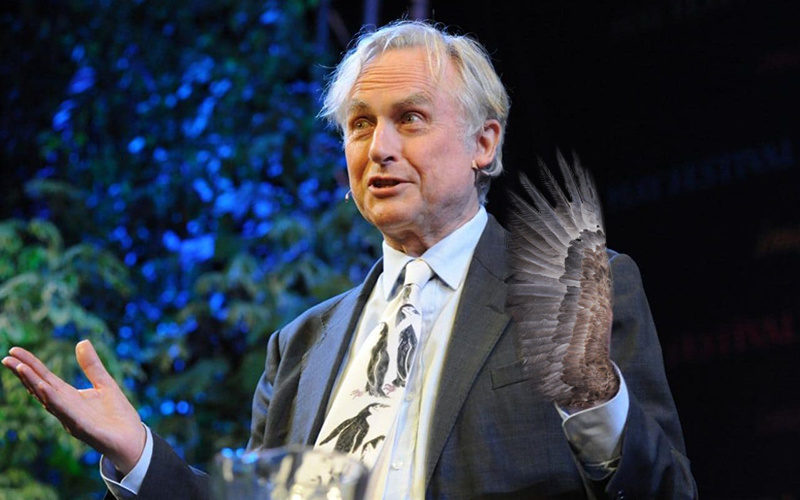
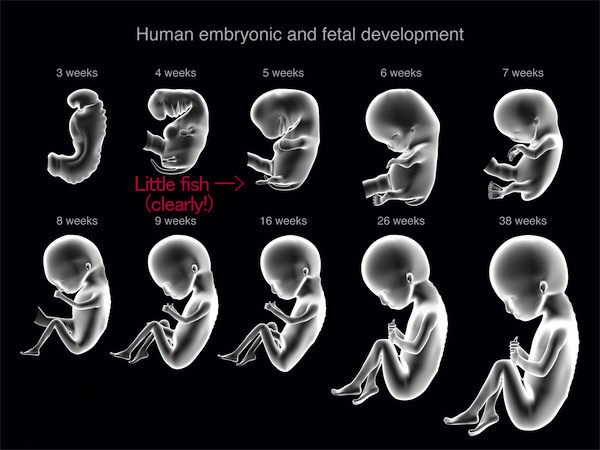




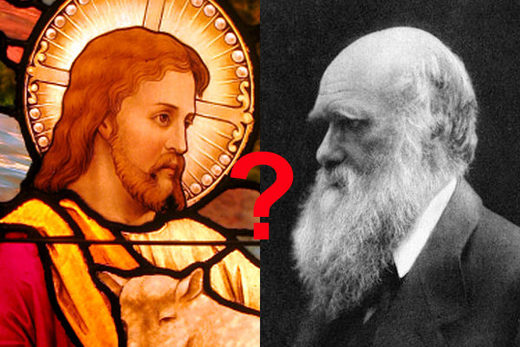
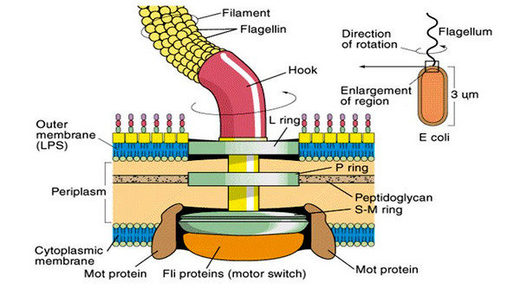
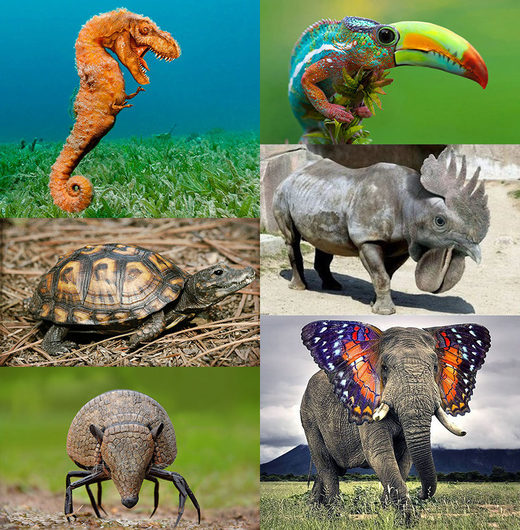
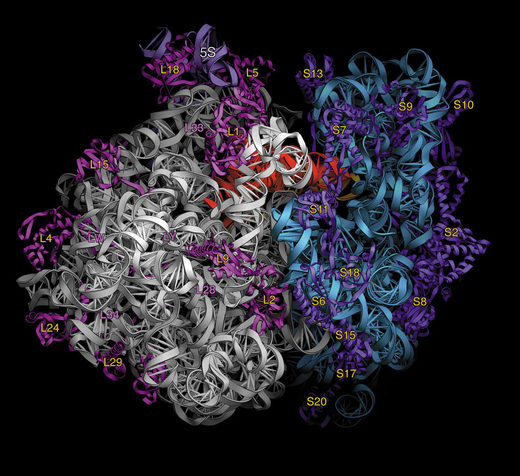




But after billions and billions of years of evolution, they developed the ability to cause people to sneeze, spreading the viruses farther and faster thus ensuring their survival.